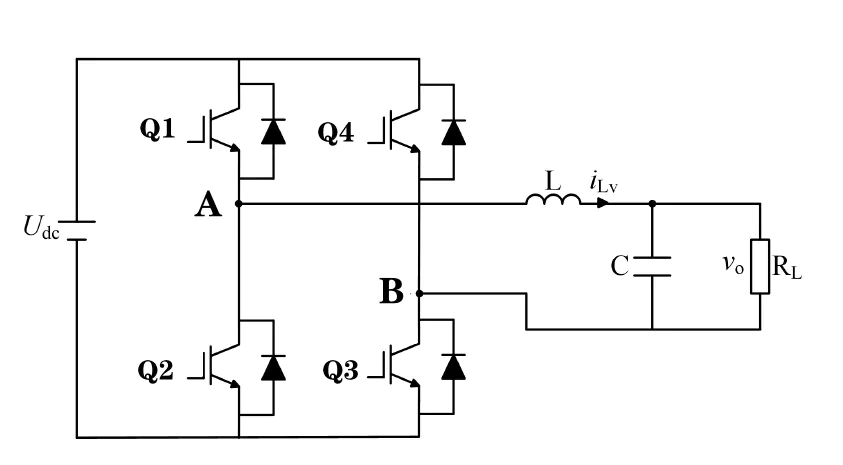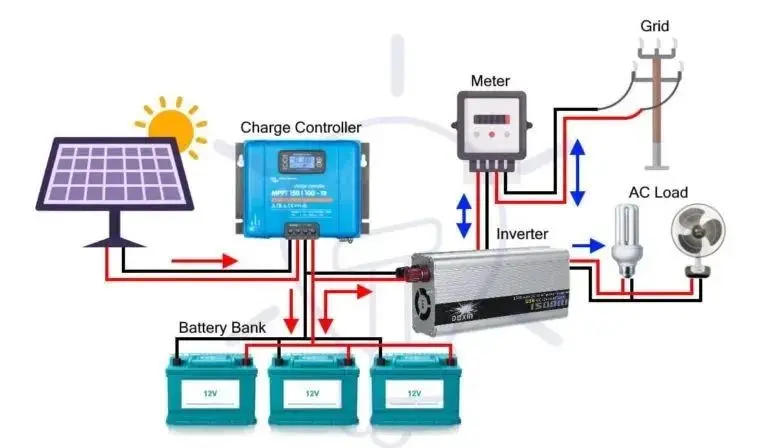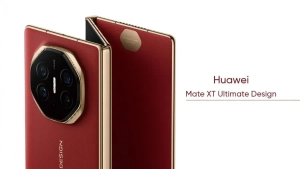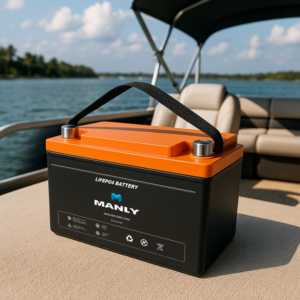Qual è l'inverter massimo per una batteria da 100 Ah?
Sommario
- Qual è l'inverter massimo per una batteria da 100 Ah?
- Inverter Size Calculator
- Comprendere le nozioni di base sugli inverter
- Una batteria al litio da 100 Ah funzionerà con un inverter da 1000 W?
- Posso far funzionare un inverter da 2000 W con una batteria da 100 Ah?
- Consigli per l'installazione e la sicurezza di un inverter da 1000 Watt
- Conclusione
- Ulteriori informazioni sulla batteria
Inverter Size Calculator
Inverter Size Calculator: How to Use and Interpret
When considering the compatibility of a 100Ah lithium battery with a 1000W inverter, the Inverter Size Calculator becomes a crucial tool. It's designed to accurately assess your system's needs, helping you determine the maximum inverter size your 100Ah battery can handle. This is based on your battery voltage, inverter efficiency, and power factor, ensuring you don't overload your battery.
What Can You Calculate with This Tool?
Maximum Inverter Size: Input the battery voltage, inverter efficiency, battery capacity, and power factor, and the calculator will give you the maximum inverter size that your battery can support. This ensures you use an inverter that matches your battery's capabilities and avoids overloading it.
Ensure Compatibility: For those unsure about what inverter to choose for their setup, this versatile calculator offers an easy way to determine whether your current 100Ah battery is sufficient or needs a larger inverter. You can optimize your energy use by adjusting the values based on your unique battery setup, ensuring that the calculator caters to your specific needs.
Come funziona
Battery Voltage (V): Enter your battery's voltage (e.g., 12V, 24V). The calculator uses this to determine the total energy available from your battery.
Inverter Efficiency (%): Your inverter's efficiency rate indicates how much energy is actually used for powering your devices after conversion losses. Typically, this is around 80-95%. Inputting this ensures a more realistic calculation.
Battery Capacity (Ah): The default is 100Ah, but you can change this value based on your battery capacity. This value represents how much energy your battery can store.
Power Factor: This is important when considering AC loads. It accounts for how efficiently the inverter supplies power to the connected appliances. For most devices, a power factor of 1.0 is standard.
Once these values are entered, the calculator will determine the maximum inverter size based on the available energy and efficiency. This ensures you avoid selecting an inverter that exceeds your battery’s capabilities.
For further assistance and detailed information, please visit our website and contact our expert customer service at MANLY Battery Contact Us.Comprendere le nozioni di base sugli inverter
1. Spiegare cos'è un inverter elettrico e la sua funzione
An electric inverter is a device that converts direct current (DC) into alternating current (AC). This is important because many household appliances and electronic devices run on AC power. The purpose of a power inverter is to make it possible to use these devices with a DC power source, such as a battery or solar panel.Inverters use a combination of electronic components to change the flow of electricity. They take the DC power, usually from a battery, and use it to create AC power. This AC power can then be used to run various devices like TVs, computers, and even kitchen appliances. The main parts of an inverter include the inverter bridge, control logic, and filtering circuit.For example, if you have a 12V battery, the inverter can convert this 12V DC into 120V AC, the standard voltage for household outlets in the United States. This allows you to use your battery to power devices typically plugged into an AC outlet.In electrical terms, an inverter is a device that changes direct current (DC) to alternating current (AC). This conversion process involves an alternating current inverter system that utilizes several key components, including the inverter bridge, control logic, and filtering circuit.
2. Breve panoramica dei diversi tipi di inverter di potenza per le case
There are several inverter di potenza per abitazioni, ciascuno progettato per applicazioni ed esigenze diverse. Ecco alcuni tipi comuni:- Invertitori a onda sinusoidale pura: forniscono un'onda di elettricità uniforme e costante, simile a quella ottenuta dalla rete elettrica. Sono ideali per i dispositivi elettronici sensibili come computer e apparecchiature mediche.
- Invertitori sinusoidali modificati: Sono più semplici ed economici degli inverter a onda sinusoidale pura ma producono un'onda elettrica meno uniforme. Sono adatti per dispositivi meno sensibili come utensili elettrici ed elettrodomestici.
- Invertitori di collegamento alla rete: These solar power systems are designed to feed electricity back into the grid. They help reduce electricity bills by allowing homeowners to use solar power during the day and grid power at night.
- Invertitori portatili: These are small, lightweight inverters that can be used for camping, in cars, or emergencies. They are perfect for charging small devices like phones and laptops.
- Invertitori ibridi: These inverters can work as standalone and grid-tie inverters. They are versatile and can be used in various applications, including solar power systems.
 Componenti di un inverterThe main components of an inverter play crucial roles in its operation. These include the DC input, which is the battery or solar panel; the inverter bridge that switches the DC to AC; and the output, where the AC power is supplied to the devices. The control logic ensures that the inverter operates efficiently, and the circuito di filtraggio smooths out the AC output to make it usable for all devices.Come funziona un inverter CAAn Invertitore CA converts the battery's DC power into a high-frequency AC signal. This signal is then transformed into the desired voltage using a transformer. Finally, the high-frequency AC is converted back to a lower-frequency AC that matches the household power grid, usually 60Hz, in the United States. This process ensures that the output from the inverter is compatible with standard household appliances.Applicazioni degli inverterInverters are used in many applications, including solar power systems, which convert the DC power from solar panels into AC power for home use. They are also used in off-grid systems to provide power in remote locations and emergency power systems to provide backup power during outages. Electricity inverters are also standard in RVs and boats to provide power for appliances and electronics while on the move.In conclusion, an electric inverter is crucial for converting DC to AC power, making it possible to use various electronic devices with different power sources. Many inverters are available, each suited for other applications, ensuring you can find the right inverter for your needs. Understanding the basics of how inverters work and the types available can help you decide when to choose the right inverter for your specific needs.
Componenti di un inverterThe main components of an inverter play crucial roles in its operation. These include the DC input, which is the battery or solar panel; the inverter bridge that switches the DC to AC; and the output, where the AC power is supplied to the devices. The control logic ensures that the inverter operates efficiently, and the circuito di filtraggio smooths out the AC output to make it usable for all devices.Come funziona un inverter CAAn Invertitore CA converts the battery's DC power into a high-frequency AC signal. This signal is then transformed into the desired voltage using a transformer. Finally, the high-frequency AC is converted back to a lower-frequency AC that matches the household power grid, usually 60Hz, in the United States. This process ensures that the output from the inverter is compatible with standard household appliances.Applicazioni degli inverterInverters are used in many applications, including solar power systems, which convert the DC power from solar panels into AC power for home use. They are also used in off-grid systems to provide power in remote locations and emergency power systems to provide backup power during outages. Electricity inverters are also standard in RVs and boats to provide power for appliances and electronics while on the move.In conclusion, an electric inverter is crucial for converting DC to AC power, making it possible to use various electronic devices with different power sources. Many inverters are available, each suited for other applications, ensuring you can find the right inverter for your needs. Understanding the basics of how inverters work and the types available can help you decide when to choose the right inverter for your specific needs.Una batteria al litio da 100 Ah funzionerà con un inverter da 1000 W?
Understanding whether a 100Ah lithium battery can run a 1000 watt inverter requires examining the compatibility and practical scenarios where this setup is adequate.1. Compatibilità di una batteria al litio da 100 Ah con un inverter da 1000 Watt
To determine if a 100Ah lithium battery can power a 1000 watt inverter, we must understand the relationship between the battery’s capacity, voltage, and power demand. A 100Ah lithium battery provides 100 ampere-hours of current. If the battery voltage is 12V, the total energy capacity is:12V×100UNh=1200WhA L'inverter da 1000 watt ne richiede 1000 watts of power per hour. To find out how long the battery can power the inverter, we divide the battery’s total energy by the inverter’s power demand:1200Wh÷1000W=1.2oreThis theoretical calculation shows that the battery can run the inverter for about 1.2 hours, but this is under ideal conditions. Factors such as inverter efficiency and battery discharge rates can affect this duration in real-world scenarios.Inverter efficiency typically ranges from 70% to 90%. If we assume an 80% efficiency, the actual usable energy from the battery would be:1200Wh×0.8=960WhQuindi, il tempo di esecuzione pratico sarebbe:960Wh÷1000W=0.96orePertanto, con un inverter efficiente all'80%, una batteria al litio da 100 Ah può far funzionare un inverter da 1000 watt per circa 0,96 ore, o poco meno di 1 ora.2. Esempi e scenari
Let’s look at some practical examples where this setup might be used effectively:- Campeggio o attività all'aperto: If you’re using the battery to power lights, small kitchen appliances, or charging devices, the short run time might be sufficient. For instance, running a 1000W electric grill or a coffee maker for short periods can be pretty convenient.
- Energia di emergenza: In a power outage, a 100Ah lithium battery connected to a 1000 watt inverter can keep essential devices running. You could power a few lights, charge phones, or even briefly run a small refrigerator.
- Luci a LED: 100 W
- Il computer portatile: 50 W
- Caricatore del telefono: 10W
Posso far funzionare un inverter da 2000 W con una batteria da 100 Ah?
1. Esaminare la fattibilità dell'utilizzo di un inverter da 2000 W con una batteria al litio da 100 Ah
We must first examine the power requirements and capacity to understand if a 100Ah lithium battery can power a 2000W inverter. A 100Ah lithium battery at 12V provides:12V×100UNh=1200WhUn inverter da 2000 W richiede 2000 watt di potenza all'ora. Per scoprire per quanto tempo la batteria può far funzionare l'inverter, dividiamo l'energia totale della batteria per la richiesta di potenza dell'inverter:1200Wh÷2000W=0.6oreThis theoretical calculation shows the battery can run the inverter for about 0.6 hours, or approximately 36 minutes. However, this is under ideal conditions. Real-world factors like inverter efficiency and battery discharge rates will impact this duration.Inverter efficiency typically ranges from 70% to 90%. Assuming an efficiency of 80%, the actual usable energy from the battery would be:1200Wh×0.8=960WhQuindi, il tempo di esecuzione pratico sarebbe:960Wh÷2000W=0.48orePertanto, con un inverter efficiente all’80%, una batteria al litio da 100 Ah può far funzionare un inverter da 2000 W per circa 0,48 ore, o poco meno di 30 minuti.2. Evidenziare le limitazioni e le considerazioni per questa configurazione
While a 100Ah lithium battery can technically power a 2000W inverter, the duration is limited, making it impractical for continuous or long-term use. Here are some key considerations and limitations:- Sforzo della batteria: Running a 2000W inverter significantly strains a 100Ah battery, potentially reducing its lifespan. High power demands can cause the battery to heat up and degrade faster.
- Perdite di efficienza: Inverters have efficiency losses. Low-frequency inverters typically consume between 50 and 100W of static power. Even without any load, a low-frequency inverter can drain the battery quickly. For example, with a static consumption of 75W, the inverter alone would consume 0.075Wh per hour. Over 10 hours, this could deplete a significant portion of the battery’s capacity.
- Invertitori ad alta frequenza: High-frequency pure sine wave inverters are more efficient, with static power consumption around 8W. This makes them better suited for small off-grid systems. With a high-frequency inverter, the same 100Ah battery could last up to 100 hours on static load alone. With higher efficiency (up to 94%), the battery consumption is much lower during operation.
- Requisiti di alimentazione: A 2000W inverter running at full capacity would consume more power than a 100Ah lithium battery can provide for a sustainable period. A larger capacity battery, such as a 200Ah battery, would be more appropriate for continuous use.
Esempio pratico
Consider a scenario where you need to power multiple devices. For instance:- Frigorifero: 150 W
- Il computer portatile: 50 W
- Luci a LED: 30 W
- Caricatore del telefono: 10W

Consigli per l'installazione e la sicurezza di un inverter da 1000 Watt
1. Guida passo passo su come installare un inverter da 1000 Watt
Installing a Invertitore da 1000 watt involves several key steps to ensure safe and efficient operation. Follow this guide for a smooth installation process:- Controllo pre-installazione: Prima di iniziare, ispezionare l'inverter per eventuali danni che potrebbero essersi verificati durante la spedizione. Ciò garantisce che stai iniziando con un'unità completamente funzionale.
- Scegli una posizione adatta: Select an installation site away from direct sunlight, heat sources, and moisture. The location should be well-ventilated to keep the inverter cool. Avoid placing it near other electronic devices to prevent interference. Ensure the site can support the inverter’s weight and allow enough space for ventilation and maintenance.
- Misure di sicurezza elettrica: Cover the solar panels with opaque material before making any electrical connections or disconnecting the DC circuit breaker. This prevents dangerous voltages from being generated during installation.
- Montare l'inverter: Fissare l'inverter su una superficie stabile, come una parete o uno scaffale robusto. Assicurati che sia a pochi centimetri dal suolo per proteggerlo da potenziali danni causati dall'acqua. Utilizzare l'hardware di montaggio appropriato per garantire che sia fissato saldamente.
- Collegare la batteria: Position the battery close to the inverter to minimize voltage drop. Use cables with appropriate gauges and sound insulation. Connect the battery's positive terminal to the inverter's positive input and the negative terminal to the negative input.
- Collegare i pannelli solari (se applicabile): Se si utilizzano pannelli solari, collegarli all'inverter seguendo le istruzioni del produttore. Assicurarsi che tutte le connessioni siano strette e sicure.
- Mettere a terra l'inverter: Proper grounding is essential for safety. Use a grounding wire to connect the inverter’s ground terminal to a suitable grounding point.
- Controlli finali: Before powering on, double-check all connections. Please ensure the wires are correctly and securely connected to prevent short circuits or other electrical issues.
2. Misure di sicurezza, compreso il cablaggio corretto e la prevenzione dei sovraccarichi
Ensuring safety during and after the installation of your Invertitore da 1000 watt is crucial. Here are some essential safety measures:- Installazione professionale: While it’s possible to install an inverter yourself, it's advisable to hire a professional with experience in inverter installations. This minimizes risks and ensures that the installation meets all safety standards.
- Utilizzare cavi isolati: Utilizzare cavi isolati standard per prevenire cortocircuiti e potenziali rischi di incendio. I cavi devono essere della sezione corretta per gestire il carico di alimentazione.
- Manutenzione regolare: Conduct regular checks on the inverter and battery. Inspect the battery's water level every three months and lubricate the terminals to prevent rust. Regularly clean the inverter and check the cooling fan to ensure it operates correctly.
- Evitare il sovraccarico: Non collegare all'inverter apparecchi a carico elevato, come frigoriferi o motori. Il sovraccarico può danneggiare l'inverter e potenzialmente causare interruzioni di corrente. Controllare sempre le specifiche di potenza degli apparecchi prima di collegarli all'inverter.
- Monitorare il consumo di energia statica: Be aware of the inverter’s static power consumption. For example, a low-frequency inverter typically consumes between 50 - 100W when idle, while a high-frequency pure sine wave inverter consumes around 8W. This knowledge helps manage battery life more effectively.
- Seguire le linee guida del produttore: Read all instructions in the inverter’s manual. This helps maintain the inverter’s warranty and ensures it operates safely and efficiently.
- Ventilazione adeguata: Ensure the inverter’s location is well-ventilated to prevent overheating. High temperatures can reduce the inverter’s efficiency and lifespan.
- Precauzioni di emergenza: Keep spare fuses handy. Having replacements on hand can reduce downtime in the event of a fuse blowing. Always disconnect the inverter from the power source before replacing any fuses.
- Ispezioni regolari: Regularly check all connections and terminals for signs of wear or damage. Replace any damaged wires immediately to maintain safe and efficient operation.



















